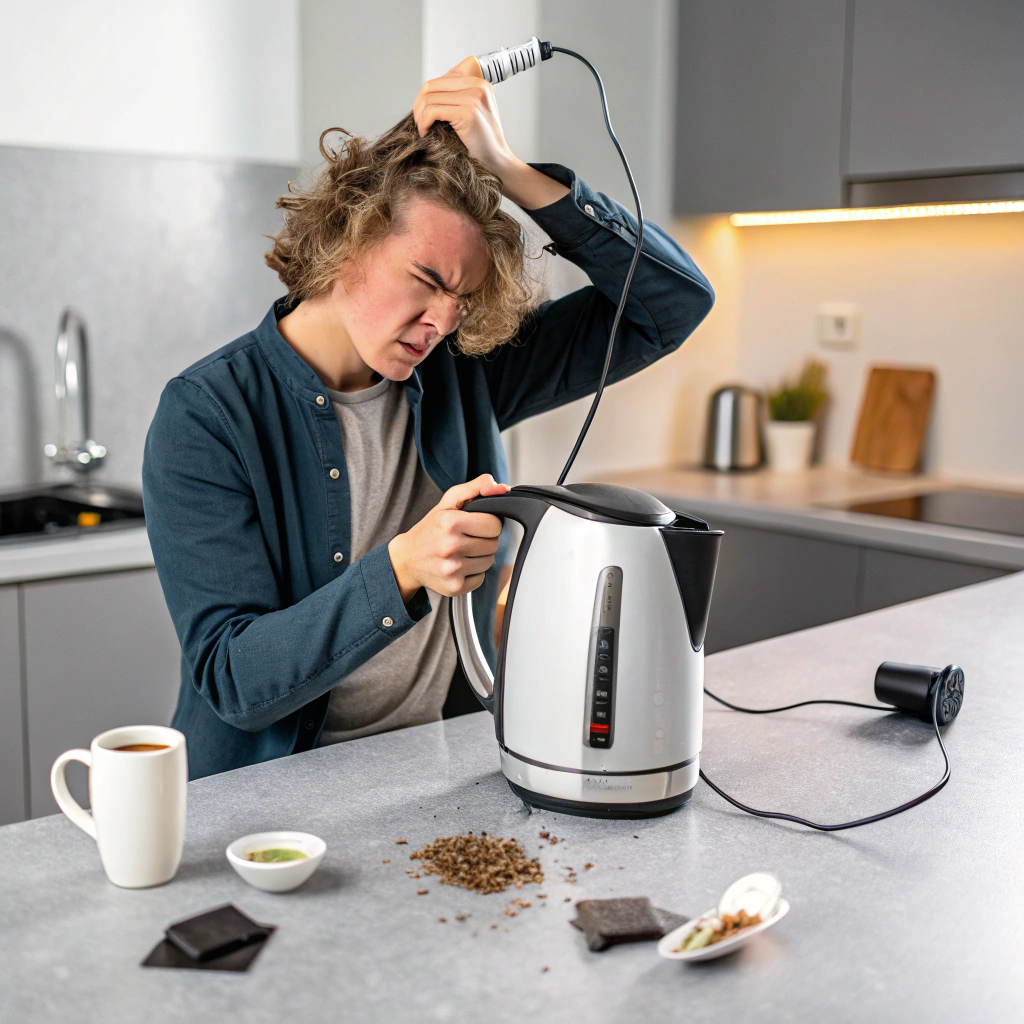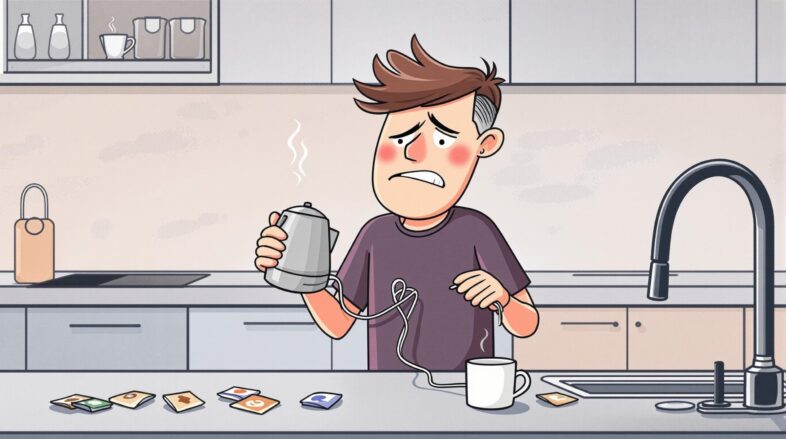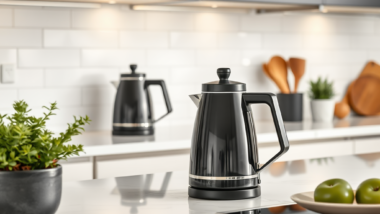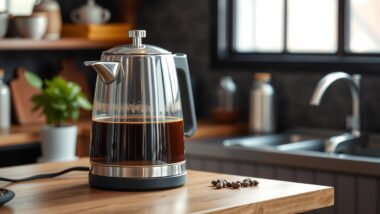Kettle Stopped Working
As one of the most commonly used appliances in modern kitchens, electric kettles play a critical role in our daily lives.
From brewing your morning coffee to preparing tea for guests, a functional kettle can make life much easier. But what happened when your Kettle Stopped Working? This question stirs feelings of frustration for many.
Whether you’re a tea aficionado or a casual user of this essential device, understanding the causes of kettle failure and how to troubleshoot these issues can prove invaluable.
In this comprehensive guide, we’ll explore the common reasons why a kettle stops working, how to troubleshoot it, maintenance tips to prevent future issues, and ultimately, when to repair or replace it.
Understanding Why Your Kettle Stopped Working
An electric kettle uses a simple mechanism to heat water quickly and efficiently. Despite their straightforward design, various factors can lead to your kettle ceasing to function. Here are some of the most common reasons:
Power Issues
Unplugged Kettle
One of the simplest yet most overlooked issues is that your kettle may not be plugged in. It’s definitely worth checking if your kettle is securely connected to a working power outlet.
Faulty Power Outlet
Sometimes, the issue resides not within the kettle but the outlet itself. To diagnose this, try plugging another appliance into the same outlet. If it doesn’t work, the outlet may require attention.
Automatic Shut-Off and Overheating
Understanding Auto Shut-Off Features
Modern kettles come equipped with safety features like automatic shut-off to prevent overheating. If your kettle stops working shortly after boiling, check if the auto shut-off has activated due to factors like low water level or overheating.
Signs of Overheating
If your kettle has been running consistently over time, it may overheat, causing it to shut down to prevent damage. Pediatricians recommend not to let it run dry, as this not only disrupts function but poses safety hazards.
Boiler Issues and Scaling
Mineral Buildup
Calcium and lime deposits can accumulate inside the kettle through repeated use, especially if you live in an area with hard water. Scaling affects heating efficiency, making the kettle less effective and sometimes rendering it completely inoperable.
Importance of Regular Descaling
Descaling your kettle regularly can help prevent this issue. Using a simple homemade solution of vinegar and water or a commercial descaling product can restore your kettle’s functionality.
Troubleshooting Your Kettle
If your kettle has stopped working, follow these basic troubleshooting steps before considering repairs or replacements:

Basic Troubleshooting Steps
Check the Power Source and Plug
To begin, make sure your kettle is plugged in securely. Change sockets if necessary. If it has a power button, ensure it’s turned on.
Resetting the Kettle
Some kettles may need to be reset after an automatic shut-off. Unplugging the kettle for a minute before plugging it back in can sometimes solve the issue.
Inspecting the Kettle for Physical Damage
Look for Cracks or Wear
Inspect your kettle for any visible signs of damage. Cracks or deformities on the body of the kettle can be reasons why it’s not functioning as intended.
Checking the Lid and Spout
Sometimes, a misaligned or broken lid can affect the kettle’s performance. Ensure that all components are intact.
Cleaning and Descaling
Cleaning and descaling your kettle is crucial to maintaining its functionality:
Steps for Cleaning the Kettle Interior
To clean the interior, fill the kettle with equal parts water and vinegar, bring it to a boil, and let it sit for 30 minutes. Rinse thoroughly afterward.
Homemade Descaling Solutions
If you prefer something less potent than vinegar, try using baking soda and water. Mix two tablespoons of baking soda with water and boil — it’s an effective and gentle way to maintain your kettle.
Maintenance Tips to Prevent Kettle Stoppage
Taking care of your kettle can extend its life and keep it in good working condition. Here are a few maintenance tips:
Regular Cleaning
Frequency of Cleaning Your Kettle
It’s advisable to clean your kettle every couple of weeks, especially if you use it daily. Over time, mineral deposits can build up, leading to headaches when you need it to work efficiently.
Proper Storage
Best Practices for Storing Kettles
When not in use, store your kettle with the lid off. This allows moisture to evaporate, helping to prevent any unpleasant odors and mineral buildup.
Avoiding Common Mistakes
Not Boiling with an Empty Kettle
One of the most common mistakes users make is boiling an empty kettle. This can cause significant damage and might lead to the kettle shutting down automatically.
Using the Right Voltage
Always confirm that your kettle matches the voltage your home supports. Plugging a kettle with lower voltage rating into a higher outlet can easily lead to costly repairs.
When to Repair vs. Replace Your Kettle
Deciding whether to repair or replace your kettle can be a tough call. Here’s how to make that decision:
Signs of Repairable Issues
If your kettle has minor issues—like needing a good clean or a simple power reset—repair is likely the way to go. Regular issues such as faulty switches or cords can also be fixed without great expense.
When Replacement is the Better Option
If your kettle is several years old, has been experiencing consistent issues, or has significant damage, it might be time to invest in a new kettle. Weigh the cost of potential repairs against purchasing a new one.
Cost of Kettle Repairs
Expect to spend anywhere between $30 to $70 for professional repairs, depending on the issue. However, if your kettle is older than five years and repairs are over half the price of a new kettle, replacement is usually more economical.
Professional Services for Kettle Repairs
If you find yourself in need of professional help, here’s how to find a reliable repair service:
Finding an Appliance Repair Specialist
Search for specialists in your area with positive reviews or ask for recommendations from friends or family. Verify that they have experience with your specific kettle model.
Average Price Estimates for Common Repairs
Generally, basic repairs such as replacing cords or switches range from $20 to $50. More complicated internal repairs can reach up to $100 or more.
FAQs about Kettle Stopped Working
What should I do if my kettle stopped working suddenly?
First, check the basics: Ensure it’s plugged in, inspect for any visible damage, try resetting it, and look for residue. If all else fails, consult a repair service.
Can kettles be repaired?
Yes, many issues can be repaired, although certain severe problems may require replacement instead, especially in older models.
How do I know if my kettle is beyond repair?
If repairs cost more than half the replacement value or if the kettle has significant wear and tear, it might be time to invest in a new one.
Is there a standard lifespan for kettles?
Typically, an electric kettle lasts about 5 to 10 years, depending on how often you use and maintain it.
Conclusion
Kettle Stopped Working
A kettle that stops working can be a frustrating experience, but many issues can be resolved easily.
By understanding the common causes of kettle problems, effectively troubleshooting, maintaining your kettle, and knowing when to repair or replace it, you’ll ensure that your mornings continue to run smoothly.
Ultimately, investing time in the upkeep of your kettle not only enhances its longevity but can save you from those unexpected moments when your favorite appliance suddenly fails you.
Remember, your electric kettle is not just a tool; it’s a companion in your daily ritual of comfort, a little love and care go a long way!
This article aims to provide expertise and information backed by real-life experience for anyone faced with the unfortunate situation of a kettle that stopped working. Your kitchen experience deserves reliability; with the right care and a bit of knowledge, your kettle can serve you well for years to come.


